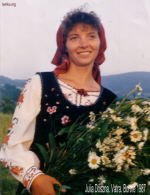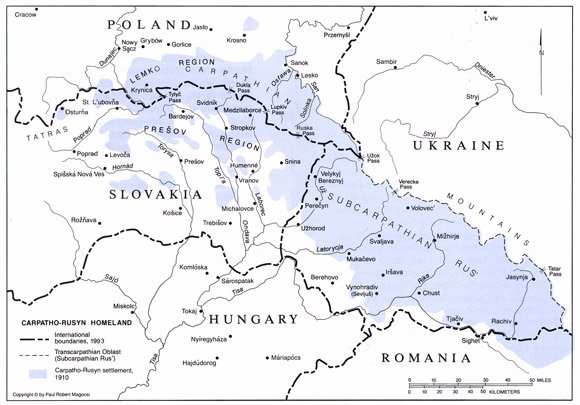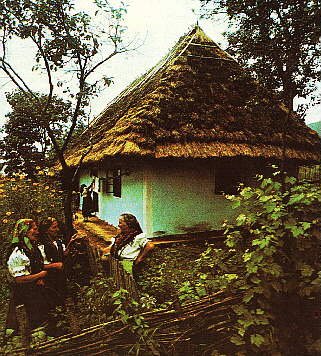Foreword: The Remoulding of Central and Eastern Europe

With the collapse of the Soviet Union, as with the collapse of the Czechoslovak and Yugoslav Unions, many new countries have appeared on the map of Europe. There are Czechia, Slovakia, Slovenia, Croatia, Bosnia-Herzegovina, Serbia and Montenegro in the latter cases, Lithuania, Estonia, Latvia, Belarus, the Ukraine, Moldova, Georgia and Armenia (not to mention a host of other new states in Central Asia) in the former case. In all honesty, however, it is not so much a question of the emergence of new countries, but rather the re-emergence of old ones. Only since the twentieth-century Communist Empires disappeared, have suppressed and ancient national identities been able to re-emerge from beneath the ruins.
It is also true that the collapse of Communist tyrannies has given rise to nationalist excesses. Thus, in Yugoslavia and the Ukraine, hardline Communists, overnight became hardline nationalists, outdoing the very nationalists whom for decades they had imprisoned and murdered. Power vacuums were quickly filled by opportunists and careerists, riding on the carousel of nationalism. Thus, the obscenities of the nationalist ex-Communists, committed by all sides in the former Yugoslavia, thus, today's Mafia-controlled nationalist Ukraine and such corrupt personalities as V. Yushchenko.
However, although some wrongs have been righted, many of the injustices committed by the Croat Communist Tito and the Georgian Communist Stalin at the end of the Second World War have still not been righted. Thus, the civil war and tensions in many parts of Eastern Europe and the former Soviet Union. These have only been compounded by the meddling of arrogant Western powers, which, for example, arranged the ethnic cleansing of Serbs by Croats and the Albanians. This created the present situation in ex-Yugoslavia, with its hundreds of thousands of Serbian refugees, cast out of their ancestral lands in Croatia and Kosovo. This will long haunt the USA and the EU, just as the Vatican-sponsored genocide of the Serbs, committed by the Croat Catholic Church between 1941-45, still haunts Roman Catholicism.
In the same way, the theft by Stalin of Bessarabian Moldova from Romania, the existence of 'Transdnestria', the presence of large Polish minorities in western Belarus and north-western Ukraine, as a result of Stalin's border changes, not to mention Hungarian minorities in Romania, Slovakia, Serbia and the Ukraine, still pose great problems. In the Ukraine, the situation is yet more serious, because the annexation of territory in Polonophile Uniat Galicia by Stalin has upset the demographic balance of the Ukraine. It has left a large anti-Russian and anti-Orthodox majority in the west. This is quite different from the eastern Ukraine and the Crimea, whose inhabitants do not even call themselves Ukrainian, but are solidly Russian and Orthodox.
The situation is even more complex in annexed Subcarpathian Russia, the south-west region of the Ukraine, which the 'ex-Communist' Ukrainian government still persists in calling 'Transcarpathian Ukraine'. Until its occupation by the Red Army in 1944, this area had been part of Czechoslovakia, and would have had an autonomous status within that country, had it not been for Czech centralism. That centralism came about through fear, for 'Transcarpathian Ukraine' was inhabited neither by Czechs, nor even by Slovaks, but by another people altogether: the Rusins.
The Rusins

The Rusin Homeland
The Rusins, also spelled Rusyns, also called Rusnaks, Carpatho-Russians and more correctly 'Subcarpathian Russians', have for perhaps a millennium and a half lived in Subcarpathian Russia. In Latin, they were called Ruthenes (the Latin form of Rusins) and their territory 'Ruthenia'. Since becoming Orthodox in the ninth century (traditionally in 863) through the Apostles of the Slavs, Sts Cyril and Methodius, or their disciples, they have never had their own State, but have always lived in the shadow of larger, neighbouring States. These were, to the south-east and south-west, Hungary, later Austria-Hungary, to the north-west, Poland, and to the north-east, what is now called the Ukraine, formerly part of Kievan Rus.
Persecuted beyond belief, in the seventeenth century many Rusins were forced into Uniatism in order to escape Hungarian feudal oppression and serfdom. Then, many Orthodox clergy, 63 priests in all, beguiled by earthly privileges, betrayed their Faith at the Unia of Uzhgorod in 1646. At the same time Rusin Orthodoxy was defended by heroes of the Faith, such as Bishop Iosif (Voloshinovsky) (+ 1680?), Bishop Porfiriy (Kulchitsky) (+ 1686), Ioannikiy (Zeykan) (+ 1687), Bishop of Mukachevo, Fr Mikhail Andrella (Orosvigovsky) (1637-1710), Iosif (Stoika), Bishop of Maramorosh (1690-1711) and Dositheus (Teodorovich), the last and martyred Bishop of Maramorosh (1718-1721) before the Unia of Maramorosh in 1721. These were all valiant confessors of the Orthodox Faith.
Orthodoxy in Carpatho-Russia was only restored at the end of the nineteenth and beginning of the twentieth centuries by new heroes, such as Archimandrite Vladimir (Terletsky) (1808- after 1874), Archimandrite (now St) Alexis Kabaliuk (1877-1947) and Archimandrite Vasiliy (Pronin) (1911-1997). In particular, many Rusins returned to their ancestral Orthodox Faith after the fall of Austro-Hungarian tyranny in 1918. However, it was only in 1931 that a Rusin Orthodox Diocese, of Mukachevo-Uzhgorod, was restored under the Serbian Church. In 1994 this large Diocese was subdivided, the Diocese of Khust-Vinogradovo (five convents, three monasteries and a seminary) taken from it. At present the Mukachevo-Uzhgorod Diocese has 160 parishes and five monasteries.
Speaking an East Slav language similar to, but quite distinct from Ukrainian, the Rusins have only recently codified their literary language. However, their first great national awakening (later cruelly suppressed by the Hungarians) took place in the late eighteenth and nineteenth centuries. The cultural and spiritual forerunners of this movement were men like Andrei Bachinsky (1732-1809) and Mikhail Luchkai (1789-1843). These were followed by a real father of the nation, Alexander Dukhnovich (1803-1865), who was supported and followed by Adolph Dobriansky (1817-1901), Ioann Rakovsky (1815-1885) (poisoned by the enemies of the Orthodox Faith), Alexander Pavlovich (1819-1900), Iosif Rubiy (1833-1919), Alexander Mitrak (1837-1913), Ivan Silvai (1838-1904), Evgeny Fentsik (1844-1903) and Anton Budilovich (1846-1908), all Slavophiles, 'awakeners' of the Rusin consciousness. Towards 1864 they formed the 'Society of Andrew the First-Called' and 'The Society of St Basil the Great', to help awaken that national consciousness.
After them came other cultural and spiritual leaders, many later grouped around 'The Society of A. Dukhnovich', founded in 1923. Among them were Petr Gebei (1864-1931), Yulian Yavorsky (1873-1937), Vera Fedelesh (1879-1967), Ivan Murani (1881-1945), Alexei Gerovsky (1883-1972), Emilian Bokshai (1889-1976), Alexander Stoika (1890-1943), Stefan Fentsik (1892-1946), Eugene Nedzelsky (1894-1961), Fr Andrei Kolomatsky (1896-1980), Andrei Karabelesh (1906-1964) and the exiled Fr Andrei Shchabak (1915-1988), Neo-Slavophiles and above all Rusinophiles.
Since the fall of Communist tyranny in the early 1990s there has been a new awakening, a new realization of Rusin national identity. The cultural leaders of this movement like Andrei Shepa (born 1919), Mikhail Kemin (born 1922), Vasiliy Sochka-Borzhavin (born 1922), Dmitriy Pop (born 1941) and Volodimir Fedinishinets (born 1943), have grouped around 'The Society of Subcarpathian Rusins', founded in 1990. The Orthodox leader of this movement is Fr Dimitri Sidor (born 1955) with his 'Society of Sts Kyrill and Methodius' and very popular newspaper 'The Christian Homeland'. He is aided by Mikola Popenko (born 1930), Feodor Kopinets (born 1954) and Abbot Gabriel (Krizina) (born 1973).
This current awakening is centred in the Ukraine, but concerns Rusins scattered through several countries. Although at least 700,000 Rusins (out of a total population of 1.2 million), among them the small highland groups of 'Boikos' and the originally Ukrainian 'Hutsuls', live in 'Transcarpathian Ukraine', there are probably another 200,000 Rusins in the rest of Subcarpathian Russia. They include those in 'Presov Rus', in northern and eastern Slovakia, perhaps 50,000 in Poland, especially in the 'Lemko Rus' area in the extreme south-east, and small Rusin minorities in Romania, Hungary and Serbia. This is a million people in Central and East Central Europe. This is not to mention the large Rusin immigration in the USA, dating back to the 1880s, and to a lesser extent in Canada, Argentina and, more recently, Australia. Worldwide, there are probably one and a half million Rusins.
Today, many Rusins want their freedom from Ukrainian nationalist tyranny. If other peoples, like the Lithuanians, Latvians, Estonians, Georgians and others, now have their own independent States, why should the Rusins not also have their own independent State? However, there is one vital difference between all those States and the Rusins. Most of the other peoples have a historic tradition of Statehood and long State-building histories; in all their history the Rusins have never had their own State. How could such a tiny and impoverished people, most of them spread between two now independent States, the Ukraine and Slovakia, form their own State? With whom could they ally themselves? What even could they call their country?

Subcarpathian Russia
For many, the concept of an independent 'Subcarpathian Russia' is no more than a Ruritanian dream. This territory, which has never formed a State in its history, is too small and impoverished to survive alone. Of which country then does history tell us that it could become a federal part? Let us look at some theoretical possibilities.

a) The Ukraine
The most obvious choice would be that 'Transcarpathian Ukraine', a name invented by Stalin's lackeys in 1944-5, should cease to exist and be called and governed autonomously as Subcarpathian Russia.
True, this would not reunite the Rusins there with those in Slovakia and elsewhere. Above all, this is not a realistic option. Although Rusin activists have pressed their case for such a change again and again since the early 1990s, the Ukraine is dominated by an old Soviet-style centralized bureaucracy, which is profoundly corrupt. For Subcarpathian Russia to exist in the Ukraine, it would require a federal Ukraine to come into existence. At present the Ukraine understands nothing of federalism, only Mafia-run Unionism, insisting that Rusins are Ukrainians! Yet, their whole tradition, including Orthodoxy, comes from the south and the Rusins were Orthodox long before Kievan Rus, now the Ukraine. Indeed, Rusins were probably among those who helped bring the Light of Orthodox to Kievan Rus.
The 'ex-Communist' anti-Rusin nationalism in the north-western Ukraine, especially Galicia, wants to ukrainianize everything within its grasp, so suppressing everything Rusin. Its Mafia gangster regime and attacks on Rusin activists since the fall of Communism have hardly endeared it to Rusins. Moreover, the older generation cannot forget how they suffered under the selfsame Galician Ukrainian nationalism before 1939. Then, the Czechoslovak State, taking Ukrainian nationalist refugees from the Communist north into Subcarpathian Russia after 1919, accepted their attacks on Rusin national identity and Ukrainianization. When the Second World War came, many of these same unprincipled Ukrainian nationalists sided with the Nazis, becoming Fascists, denouncing Rusins and Jews alike. In 1944, many who did not flee with the Nazis, often became virulent Communists.
Today, Ukrainian nationalists do not recognize Rusin as a separate language. Moreover, their religious sympathies are with virulent Uniatism, the natural religion of Ukrainian nationalists. Thus, the continued domination of Subcarpathian Russia by the Ukraine would simply prolong the agony of what Rusins have already suffered under Communism since 1944; the suppression of their spiritual and national identity, their language and the continued ecological rape of the Carpathians.
Furthermore, what can the Ukraine offer? Like Subcarpathian Russia itself, it has no history of its own as an independent nation, rather it has a history of anarchy. Who wants to belong to a country, whose very name is unrecognized by its own population in its eastern half and in the Crimea, and means 'the borderland'? Does the Ukraine actually have a future? It certainly has no past.
To the anti-Rusin Ukraine, we must say No.
b) Hungary
For nearly a thousand years Subcarpathian Russia lived within Hungary, even being called 'Hungarian Rus'. Rusins lived on friendly terms with Hungarians. Why should it not return to Hungarian government?
Such a view forgets that from the late 1860s onwards, Rusins suffered under the new Hungarian nationalist rule, when persecution began. Uniat bishops like Istvan Pankovich (1820-1874), Antoniy Papp (1867-1945), Istvan Novak (1879-1932) and Uniat clergy led the battle against everything Orthodox and Rusin. Orthodoxy was already not allowed, then Rusin itself was banned. Plans were made to abolish Cyrillic, change the language of services from Slavonic to Hungarian and change the Orthodox calendar to the papal calendar.
Hungarian rule during the First World War became a genocide, with its concentration camps, especially the notorious Talerhof, and mass lynchings of Rusin Orthodox. During the Second World War, with part of their territory under Hungarian Nazi puppet rule, Rusins were once again persecuted, their language forbidden, Hungarianization (and Uniatization) were the order of the day. Why should the Rusins repeat the errors of the past? Hungary has since 1848 lost any moral justification to rule Subcarpathian Russia. Only today's small Hungarian minority in 'Transcarpathian Ukraine' would want it.
To Hungary, a Non-Slav country with its recent anti-Rusin and anti-Orthodox history, we must say No.
c) Poland
Another neighbouring country is Poland. Like Hungary, it too has no Orthodox population of any size. Moreover, its history has been one of persecution of Orthodox and the tragic misidentification of Rusins with Ukrainian bandits and terrorists. Indeed, in 1947 with its 'Operation Vistula', Poland actually systematically destroyed the Rusin way of life, deporting tens of thousands of Lemko Rusins from its south-east corner in an ethnic cleansing operation. It is only since the 1980s that the Polish State has showed any acts of regret for its past and allowed Lemko Rusins to return to their deserted homeland after the ethnic cleansing of the 1940s. As for the Polish Catholic Church, it may be keen on Uniatism, but it is not keen on Orthodoxy.
To Poland, with its anti-Orthodox history, we must say No.
d) Russia
In the nineteenth century and up until the First World War, Russia, the Protector of Orthodox Slavdom, showed its favour to the Rusins. However, it never managed to free Subcarpathian Russia from Austro-Hungarian tyranny. Though Russophilia and Russian Messianism were strong in Subcarpathian Russia right up until 1944, Soviet enslavement then traumatized Rusins. The Soviets of Moscow attached the Rusins to the Ukraine. Ukrainianization followed, the name 'Rusin' was banned. For Soviet Russia, Subcarpathian Russia was merely an outlying province of the Ukraine - 'Transcarpathian Ukraine'.
Thus, even though today Soviet Russia is no more, the historical experience of Rusins has been traumatic. Moreover, there is yet another problem here: Subcarpathian Russia has no borders with Russia. How could it belong to today's Russian Federation, when it has no borders with it?
Unless the Ukraine, 'the Borderland', breaks apart and is dismembered (not impossible), most of it becoming an Autonomous Republic of the Russian Federation, at the present time, to Russia, we must say No.
e) The Czech Republic
Many in Subcarpathian Russia look back to the inter-war period from 1919 until 1938, as a cultural and economic golden age. It is true that within the Republic of Czechoslovakia of both Presidents Masaryk and Benes, Subcarpathian Russia had a certain freedom and learned democracy. True, the supposedly federal Czechs failed to grant full autonomy, as they were supposed to according to the St Germain agreement of 1919, inspired by President Woodrow Wilson's ideals of self-determination. True, the Czech authorities also tended to encourage the suppression of Rusin national identity by sending there Ukrainian and also Russian nationalists. But, despite a sometimes colonial mentality, at least the Czechs were neutral in matters of religion and did not repress the revival of Orthodoxy, as had the Austro-Hungarians.
However, today, with the end of Czechoslovakia, the Czech Republic no longer has borders with Subcarpathian Russia. Turned westwards to Germany and the old EU, its government now has little interest in a long lost province in the east.
To Czechia, we must also say No.
f) Slovakia
The rejection of Czechia as a possibility (and no doubt the rejection of Subcarpathian Russia by Czechia) leaves us with only one solution - Slovakia. True, Slovakia fell under a Nazi puppet regime during the Second World War - but then so did all of Roman Catholic Europe, from Ireland to Poland, from Portugal to Vichy France, from Belgium to Hungary, from Spain to Italy. True, Slovak Communism equated Rusins with Ukrainians and Slovakization of the Rusins took place under the Slovak Communist regime, but this was under pressure from Moscow.
The Rusins in Slovakia have prospered more than the Rusins anywhere else. The new Slovak government has been generous to the Orthodox Church in Slovakia, centred in Presov. Over sixty new churches have been built there since the fall of Communism. Even the Uniats there wish to delatinize their rites - to become 'like the Orthodox', though, true, they have Slovakized their services in terms of language and gone over to the papal calendar. But that is the policy of the Uniat hierarchy, not of the Slovak government. The EU also provides protection for the Rusin minority in today's Slovakia.
Now that Communism is gone and the Slovak economy is beginning to revive, having entered the EU, perhaps 'Transcarpathian Ukraine' should be looking to Slovakia. After all, the Rusins of north-eastern Slovakia, in Subcarpathian 'Presov Rus', and the Rusins of the Ukraine together form over 90% of Subcarpathian Russia, both in territory and population. Although 'ex-Communist' Ukraine would not want to give up any of the territory Stalin stole for it after 1944, the Slovak government might on the other hand wish to expand eastwards. With a federal constitution, Slovakia with an autonomous region called Subcarpathian Russia, looks like a possible valid political option. The only questions - and what enormous ones they are! - are whether Slovakia would indeed want it and the Ukraine would grant it.
Afterword: Towards Ruthenia
Therefore, it may be said then that even the possibility of an Autonomous Subcarpathian Russian province or region within Slovakia seems at present to be a mere dream. However, since 1989, we have seen the most extraordinary changes, the complete redrawing of maps, in Central and Eastern Europe. Is this really such a dream? Given the events of the last seventeen years, who knows what literally uncharted territory we could enter within the next seventeen years.
If this happened and an Autonomous Subcarpathian Russia flourished under an enlightened Slovak Constitution, in the long term proving itself ready for full independence and nationhood, there would remain one more question. If one day Subcarpathian Russia were to become a fully-fledged nation state, what would it be called? Its people are indeed Rusins, but what of their nation? The pedantic but correct 'Subcarpathian Russia' seems a very unwieldy name and, moreover, could be confused with Russia itself. As regards the term 'Carpatho-Russia', though it is very attractive and often used, including by ourselves, strictly speaking it would refer to a greater area, including Galicia in the Ukrainian north. But is there an alternative? - We would suggest the Rusin word 'Rusinia'. It has been used in the past by American Rusins and corresponds closely to the Latin and so English and Western 'Ruthenia'. In public relations terms, the English translation of 'Ruthenia' is attractive.
If 'Ruthenia' were to live as an independent nation, it resources would be its natural habitat. This would have to be restored after the ravages of Communism, its militarization, tree-felling and anti-environmental hydro-electric schemes, as on the Rivers Tereblia and Rika. Its eco-system would have to be restored after the new Ukrainian cowboy Capitalism, with its tree-felling, now causing regular and disastrous floods along the valleys of the Rivers Tisa and Uzh. However, Ruthenia's resources, beauty and future are, we believe, still in her mountains, forests, fields, pure air and water, her dairy produce, orchards, fruit and market-gardens, her timber and furniture making, her sanatoria and mineral waters, her capacity for eco-tourism, her folklore, song, wonderful landscape painting tradition and the inestimable cultural heritage of her wooden churches.
We can but repeat the valiant call of Fr Alexander Dukhnovich six generations ago, which echoes down through long-suffering Rusin history:

Rusins beneath Carpathia's mounts,
Now forsake your slumber deep,
On you the nation's voice calls and counts,
Forget not your own in sleep.
May our people be set free from woes,
Our beloved kin set free,
That all the storms raised by Rusin foes
May far from our people flee.
May now there be among us justice,
Which shall truth to Rusins give.
For the wish of Rusin leaders is:
That the Rusin nation live.
We all ask God His will to unfold,
The Rusin folk to uphold
And grant better times, grant better times,
Grant better times, better times.
Fr Andrew Phillips
Felixstowe,
England
16/29 October 2006
St Longinus the Centurion